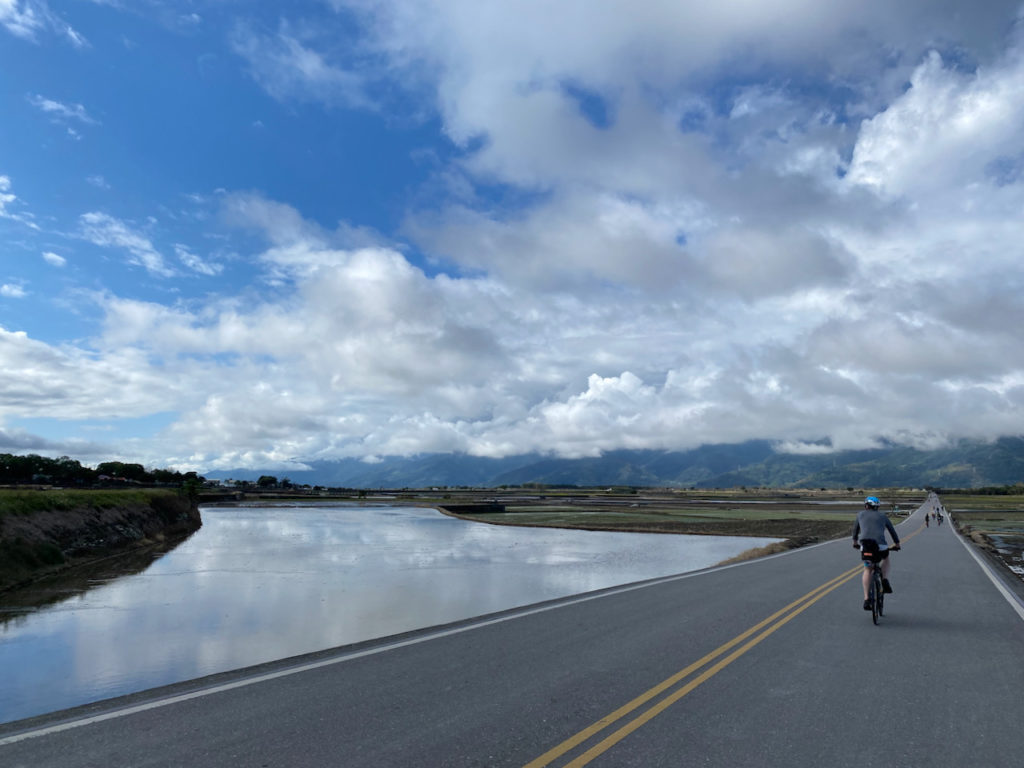
これは、分割で巡る台湾一周サイクリングの第3ステージです。今回は台東、花蓮、宜蘭を走破する予定でした。
旅程の設計
この区間を計画する際に考慮した点を紹介します。
台東から花蓮へは、海岸山脈を挟んで二つのルートが選べます。「縦谷ルート」と「海岸ルート」です。
縦谷ルートは人口が多く、水田が広がる風景や見どころが多くあります。補給地点や宿泊施設も見つけやすいです。一方で、海岸ルートでは壮大な太平洋の景色を楽しむことができ、これも見逃せません。
理想的には、両方のルートを組み合わせたプランを立てるのが最適です。まず台東を出発し、縦谷ルートで北上して瑞穂に向かい、その後「瑞港産業道路(花64 / HL64)」を利用して海岸ルートへ移行します。こうすることで、縦谷ルートのハイライトと、海岸ルートの絶景の両方を楽しめます。
特に、縦谷の見どころは南部に集中しており、海岸ルートの最も美しい景色は北部にあります。さらに、北上することで、太平洋に最も近い位置を走ることができるため、より安全に景色を楽しみながら観光スポットへ立ち寄ることができます(台湾では右側通行のため)。
その後、花蓮市を経て太魯閣峡谷へ進みます。ここは中央横貫公路(中横公路)の起点であり、中央山脈を横断し、標高3,275mの武嶺峠に至る「台湾KOMチャレンジ」のルートです。
今回は、挑戦の一端を味わうために、天祥遊憩区(標高485m)までの短いヒルクライムをルートに組み込みました。そこから北上し、宜蘭へ向かう際には、難関ルートとして知られる蘇花公路に挑みます。
蘇花公路がなぜ難関なのか?
蘇花公路を自転車で走るべきかどうかは、慎重に検討すべき重要なテーマです。このルートは、新城から蘇澳までの78kmの間に1,451mの獲得標高があり、難易度が高いことで知られています。
加えて、多くの区間が切り立った崖のすぐ横に建設されており、道幅は車両2台がギリギリ通れる程度しかありません。左手には急峻な山の斜面がそびえ立ち、頻発する地震によって岩が緩み、いつ落石が発生してもおかしくない状況です。大雨や台風の後には、土砂崩れによって道路が完全に塞がれることもあります。
また、ルート上には9つほどのトンネルがあり、内部は空気がこもりやすく、視界が悪くなるだけでなく、大型車両のエンジン音が反響し、耳をつんざくような轟音が響き渡るという厳しい環境になります。これらの要因が重なり、蘇花公路は台湾でも最も慎重に走行計画を立てるべきルートのひとつとされています。
それでも、多くのサイクリストが「リスクを冒してでも走る価値がある」と言っています。私自身はまだ挑戦していませんが、このルートを調べるためにGoogleマップのストリートビューを見ただけで鳥肌が立つほどでした。
しかし、状況は改善されつつあります。2020年に完了した「蘇花改」(蘇花公路改善計画)により、交通状況は大幅に向上しました。新しい区間は道幅が広くなり、道路が直線的に整備されたため、移動時間も短縮されました。
自転車はこの新しいルート(省道9号)を走ることはできませんが、そのおかげで大型車や一般車両の多くが新ルートに流れ、旧ルート(省道9丁号または9D号)は交通量が減り、より快適に走れるようになりました。実際に、大型トラックの走行は禁止されています。ただし、ガスや可燃性液体などの危険物を運搬するトラックのみは例外的に通行が許可されていますが、そのトラックですら以下の時間帯は通行禁止となっています:
- 7:00 – 9:00
- 16:00 – 19:00
ただし、旧蘇花公路と新ルートが重なる区間もあるため、その点には十分注意が必要です。
良好な天候条件であれば、私は台湾一周のサイクリングをする際に旧蘇花公路を走りたいと思います。しかし、もしこの区間を飛ばしたい場合は、新城駅から蘇澳新駅まで電車で移動するのが簡単な選択肢となります。
旧蘇花公路を北上し、蘇花公路の5つ目のピークを越えると、蘭陽渓が作り出した沖積扇状地に広がる宜蘭の平野へと下ることになります。このエリアには温泉ホテルが多く集まる礁溪があり、距離を抑えた1日を設けて、のんびりと過ごすのも良いアイデアです。
多くのサイクリストは、ここから北東に進み、北宜公路(省道9号の一部)にある2つの峠を越えて新店へ戻り、台湾一周を完結させます。しかし、台湾北部・北東部の海岸線は美しすぎてスキップするのはもったいない。そのため、私はそのまま北へ向かい、福隆を経由しながら沿岸ルートを選ぶことにしました。
これは理想的なプランではありますが、私たちが実際に選んだルートではありません。なぜなら、このルートは5月から9月にかけて、北風が吹かない時期に最適なものだからです。もしくは、向かい風の中を走ることを気にしない人に向いているルートとも言えます。
私たちは1月にこのステージを実施しました。この時期は北からの季節風が吹くため、南へ向かうことで風を味方につける必要がありました。
そこで、島の北東端である福隆からスタートし、初日は宜蘭をカバーしました。次に、蘇花公路の区間をスキップするため、蘇澳新駅から花蓮まで電車で移動しました。
さらに、今回は南へ向かうルートだったため、沿岸ルートを走るメリットが少なく、花蓮から台東までの区間は終始「花東縦谷」を走行しました。
以下がこのステージの詳細な旅程です。
1日目:福隆 ~ 新城太魯閣(距離54km、登り143m、下り128m)
台北から福隆に行くために、自転車をそのまま持ち込める朝の列車(No. 4148)に乗り、約1時間半の移動をしました。
私の友人2人は万華駅から先に乗車しましたが、平日の朝は通勤ラッシュで非常に混雑しており、大きな荷物(自転車)を持って乗るのは勇気が必要でした。しかし、台北駅に到着すると、多くの乗客が降りて、車内はかなり余裕ができました。
さらに、私が松山駅から乗る頃には、さらにスペースが増えて快適でした。台北には毎日90万人の通勤者がいるため、都市部を出発すると電車は空いてくる 傾向があります。そのため、北へ向かう列車に乗る場合は、松山駅や南港駅からの乗車を検討するのも良いアイデア です。
こちらの投稿で、台湾で自転車を公共交通機関に持ち込む方法についてご覧ください
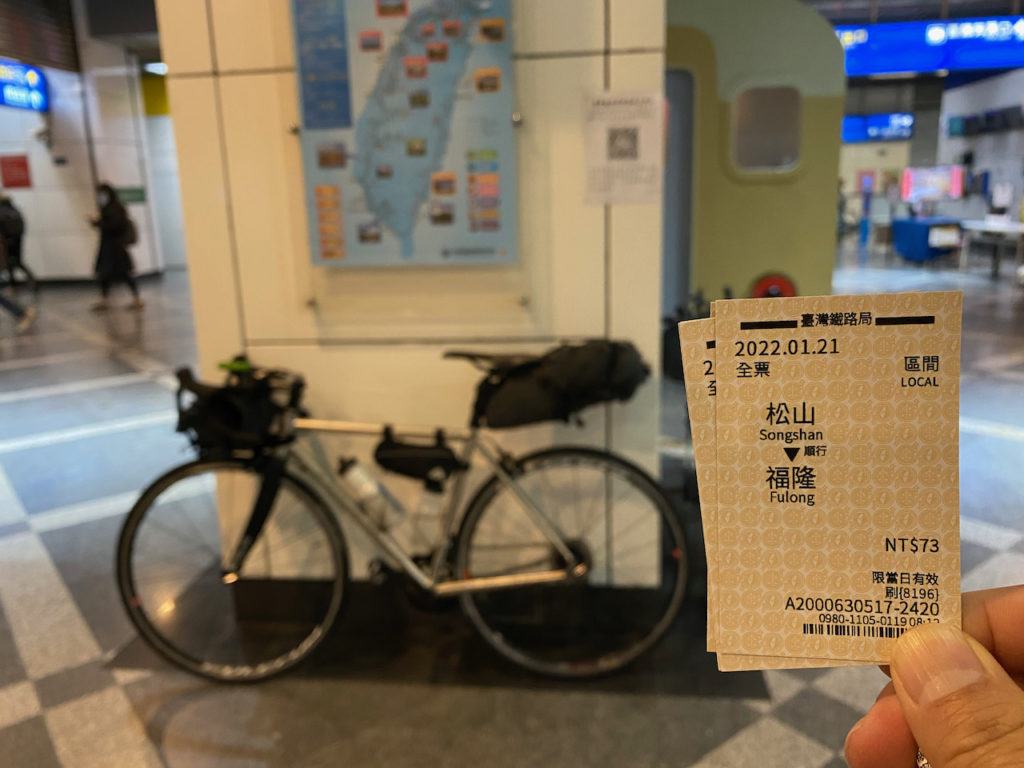
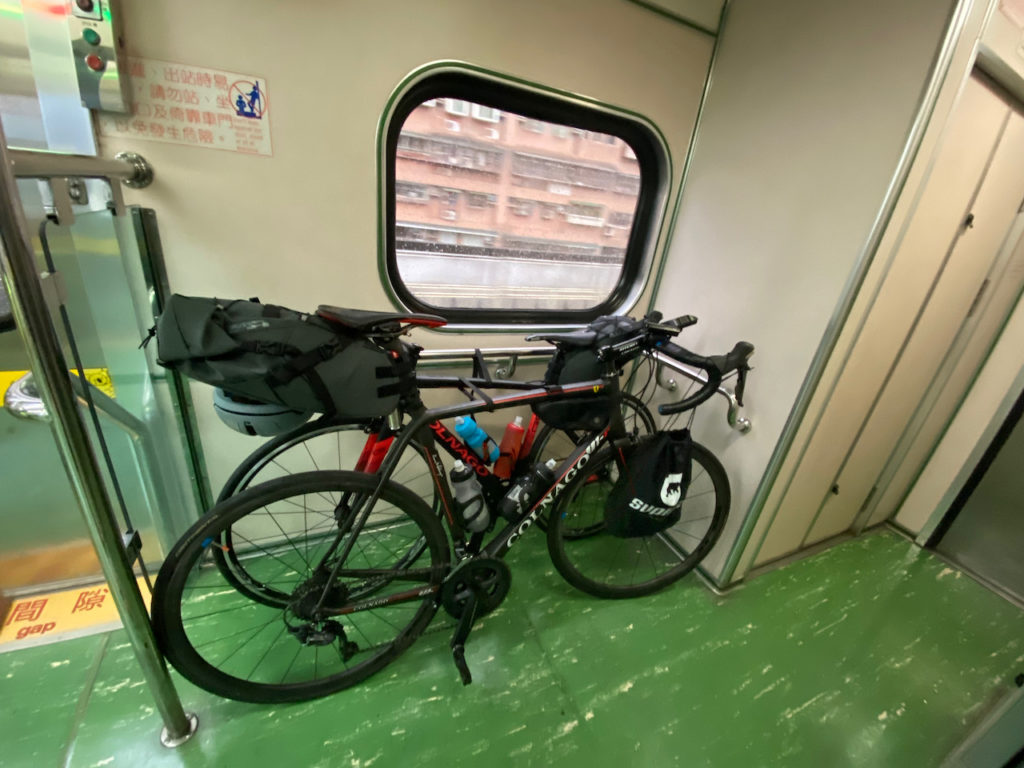
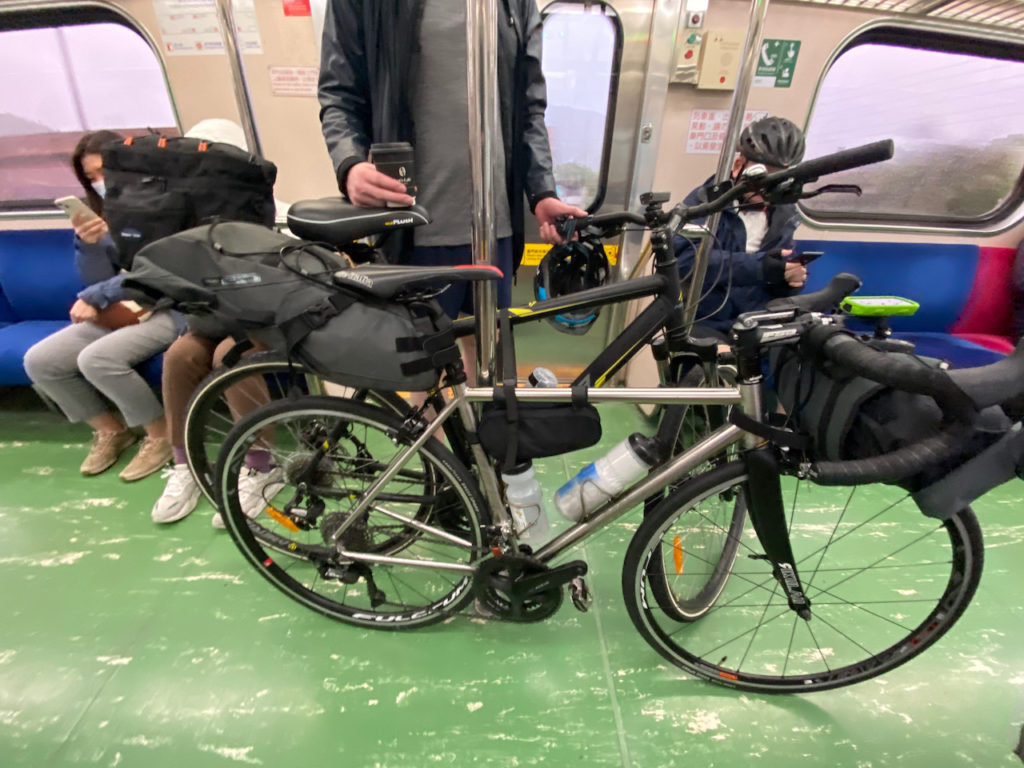
すべてが完璧に進んだものの、雨だけが問題でした。土砂降りではなかったものの、すべてが濡れる程度には降り続き、道路の穴もすっかり水たまりに なっていました。そこで、できるだけ早く旅を終えることを決めました。
私は専用の自転車道にグループを誘導しようとしましたが、ぬかるんでいるようだった ので、幹線道路を走るほうが良い という判断に。私の友人は靴の中が水浸し(私はサンダルを履いていました)。休憩のたびに靴と靴下を脱ぎ、中の水を流さなければなりませんでした。
彼らは防水ジャケットを着ていましたが、袖口や腰の部分から水がしみ込むと内部までずぶ濡れになり、バッグの中の服もすべて濡れていました。実は、コンビニで売っている使い捨てレインコートなら、この問題を簡単に解決できた のですが、薄くて破れやすい のが難点です。
早めに蘇澳新駅に到着 しましたが、駅構内にはお店がなく、周辺にも7-Elevenと数軒の屋台しかありませんでした(1kmほど手前にあったのを見逃しました)。そこで、チケットを早めの電車に変更し、7-Elevenで昼食 をとることにしました。
この列車は車両をほぼ貸し切り状態 で快適でした。今回は天祥への寄り道を予定していなかったため、新城には宿泊せず、もう少し南の北埔駅付近で宿泊 することにしました。
チェックインしてシャワーを浴びる準備をしていた友人が、バッグの中の服もすべて濡れていることに気づきました。「防水」や「耐水性」をうたうバッグも、数回使ううちに必ず浸水する運命にある ので、私はいつも服をジップロックに入れて 持ち歩いています。ちょっとした優越感はさておき(笑)、読者の皆さんにはこの違いを知っておいてほしい です。
結局、午後はコインランドリーで服と靴を洗って乾燥させることになりました(あっ、靴もね…)。
ルート
- Garmin: https://connect.garmin.com/modern/course/96915494
- Velodash: https://velodash.page.link/mj9d
- komoot: https://www.komoot.com/tour/1023787614
註記:ルートを使用するには、スマートフォンにアプリをインストールしてください。スマートフォンのブラウザで上記のリンクをタップすると、アプリが自動的に起動してルートを読み込みます。Garmin Connectの場合、アプリを使用してルートをGarminデバイスに送信できます。台湾で購入したGarminデバイスでない場合、デバイスに台湾地図がインストールされていることも確認する必要があります。このトピックに関する当社のブログ投稿もご覧いただけます
2日目:新城太魯閣 ~光復(距離72km、登り530m、下り435m)
私たちは花蓮では海岸線ルートではなく、縦谷ルートを選択しました。しかし、この縦谷ルートには省道9号線と県道193号線という2つの選択肢があります。
省道9号線:
- 道幅が広く、平坦で走りやすい
- 交通量が多い
- 補給ポイントが多い
県道193号線:
- 道幅が狭く、短い登り坂がある
- 交通量が少なく静か
- 補給ポイントは少なめ
私たちは満場一致で県道193号線を選択しましたが、結果的にこれが大正解でした。
花蓮市街を抜け、県道193号線へ入ると、そこからはまさに貸切状態。とても静かで、リラックスしながら会話を楽しみつつ走ることができました。ただし、この日も雨が降り続いていました。路面は完全に濡れていたものの、交通量が少ないため、他の車両が跳ね上げる泥水を浴びることはなく、快適に走ることができました。
県道193号線沿いには、小さな食料品店が点在しているものの、レストランはほぼ皆無でした。運よく開いている店があったとしても、食事の選択肢は限られ、まともな食事をとるのは難しいです。スナックや飲み物を購入できる場所はあるものの、種類はあまり期待できません。そのため、このルートを選ぶ場合は、事前に補給をしっかり準備することをおすすめします。
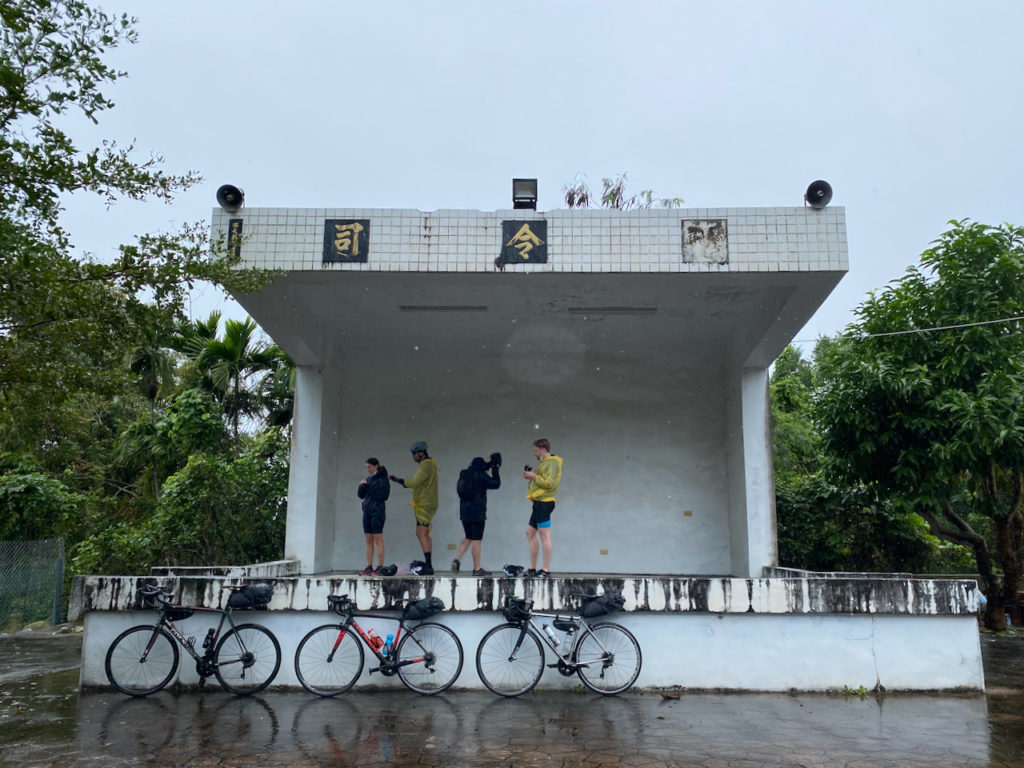
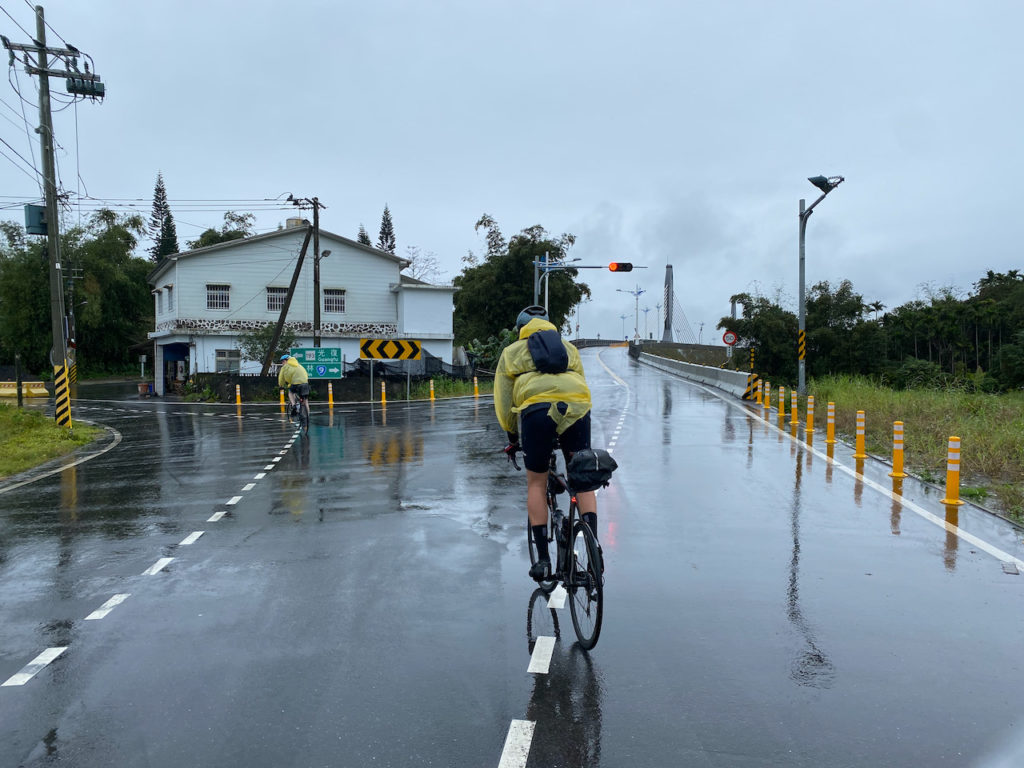
昼食後、空腹のままB&Bに遅れて到着しましたが、まずは自転車を掃除する必要がありました。幸運なことに、B&Bには広い庭があり、ホースを使って自転車の泥を洗い流すことができました。
その後、皆は急いで部屋へ向かいシャワーを浴び、私は同じ優先事項を持つ仲間と共に、さっと昼食をとりに出かけました。
その晩は、運よく素敵なレストランを見つけることができ、美味しい食事を楽しむことができました。
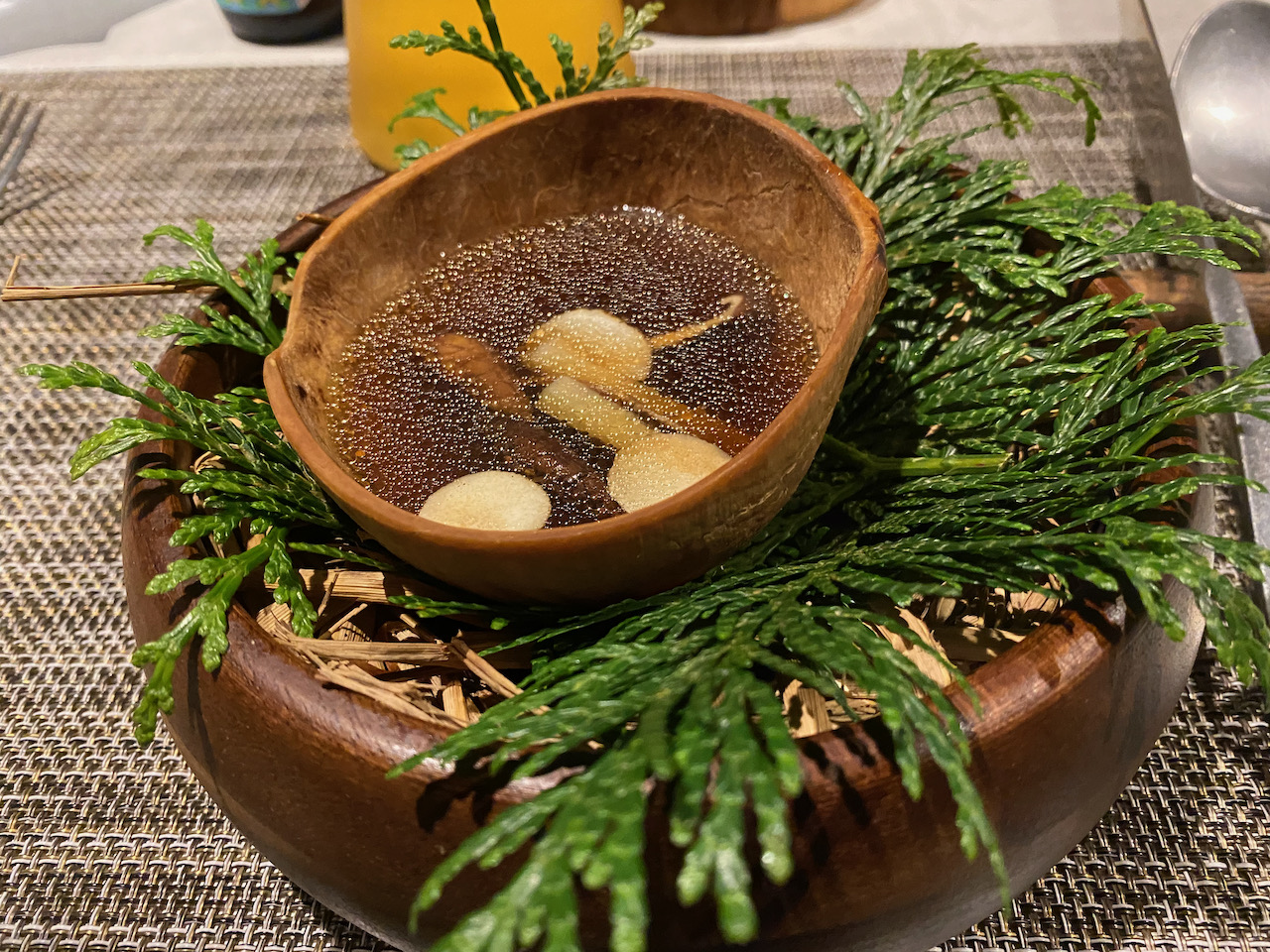
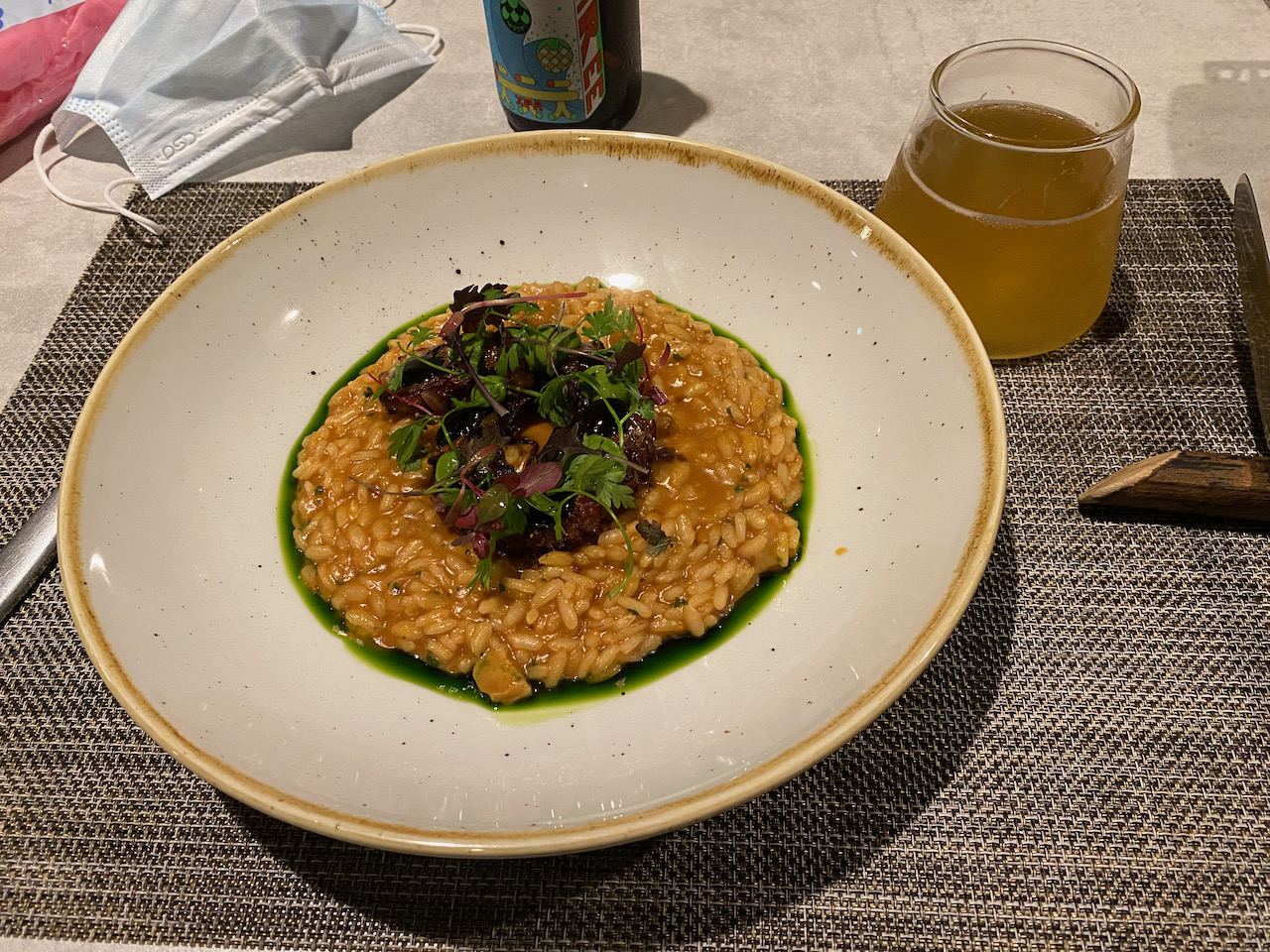
ルート
- Garmin: https://connect.garmin.com/modern/course/97184229
- Velodash: https://velodash.page.link/7KEh
- komoot: https://www.komoot.com/tour/1023790077
註記:ルートを使用するには、スマートフォンにアプリをインストールしてください。スマートフォンのブラウザで上記のリンクをタップすると、アプリが自動的に起動してルートを読み込みます。Garmin Connectの場合、アプリを使用してルートをGarminデバイスに送信できます。台湾で購入したGarminデバイスでない場合、デバイスに台湾地図がインストールされていることも確認する必要があります。このトピックに関する当社のブログ投稿もご覧いただけます
3日目:光復 ~ 富里(65km、登り424m、下り310m)
ついに太陽が顔を出しました。私たちは平坦で広い省道9号線を走りましたが、途中に標高150メートルの舞鶴台地への短い登りがありました。そこにはいくつかの茶店や北回帰線標がありました。この台地を下ると、私たちのルートと並行する2つの自転車道がありました。
最初の富源旧鉄道自転車道は、富源駅から南へ続くもので、新しい高架鉄道が建設された後に旧線が自転車道に転用されました。次に現れたのが玉富自転車道で、玉里から旧東里駅へと続くルートでした。ここは写真撮影やのんびり過ごすのに適したスポットです。
これら2つの自転車道以外は、省道9号線を走りました。この道路は広く、スクーターや自転車専用の路側帯が設けられています。2つ目の自転車道を抜けると、省道9号線沿いにある農会の直売所が目に入りました。ここでは地元の特産品を購入でき、時折、稲刈り後の藁を使った彫刻が展示されていることもあります。
この日は比較的楽な行程でした。私たちは早めに民宿にチェックインし、日没前にビールを飲みながらくつろぎました。富里はとても小さな町で、店の選択肢は限られており、唯一のイートイン可能なレストランで夕食をとりました。
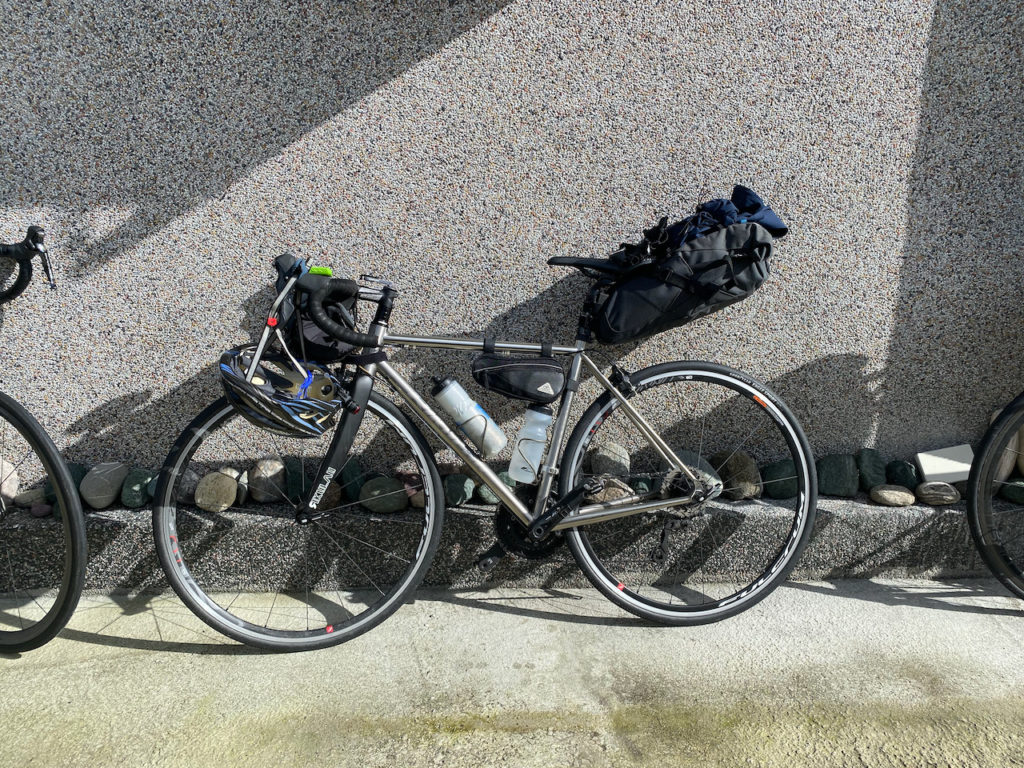
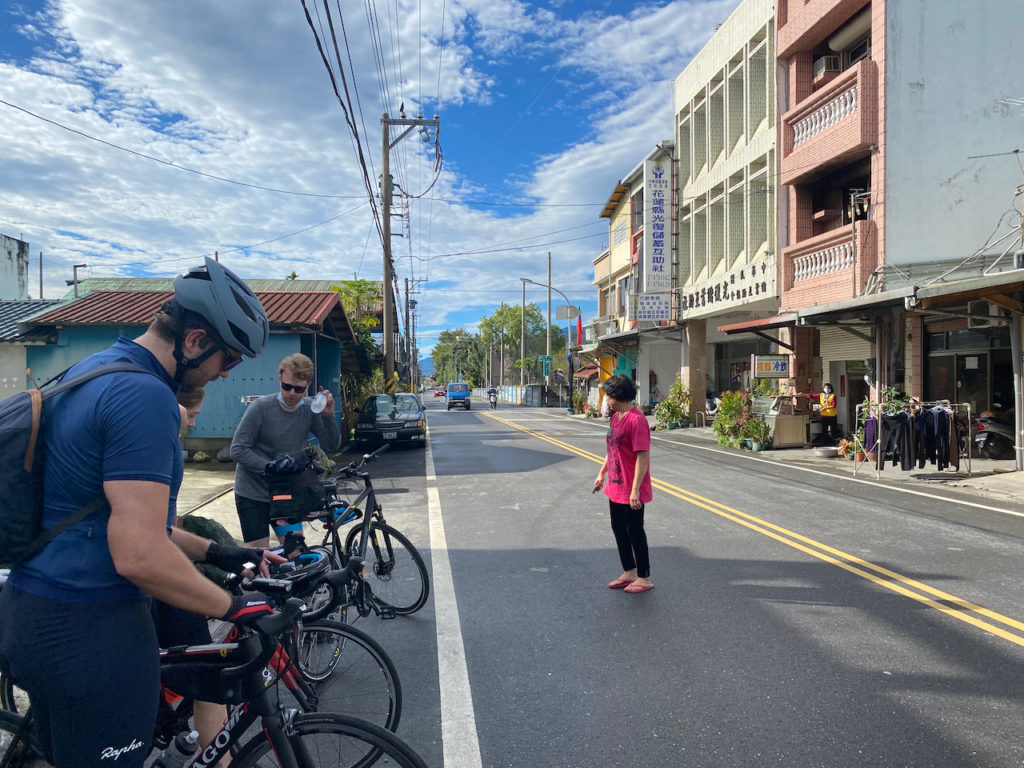
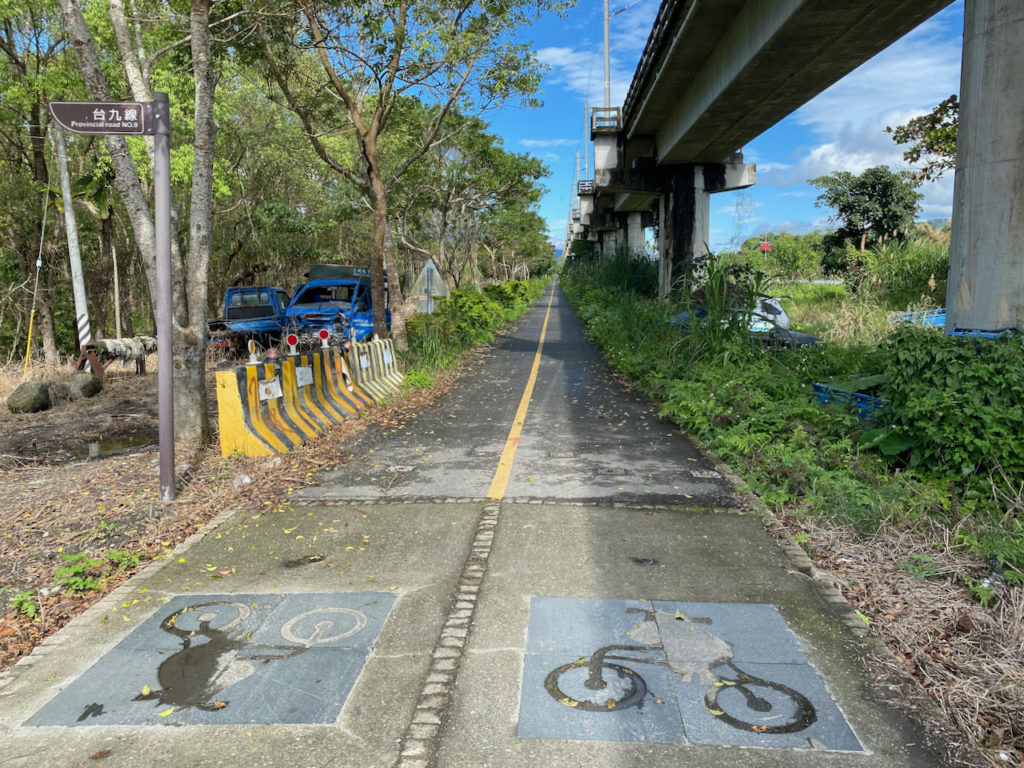
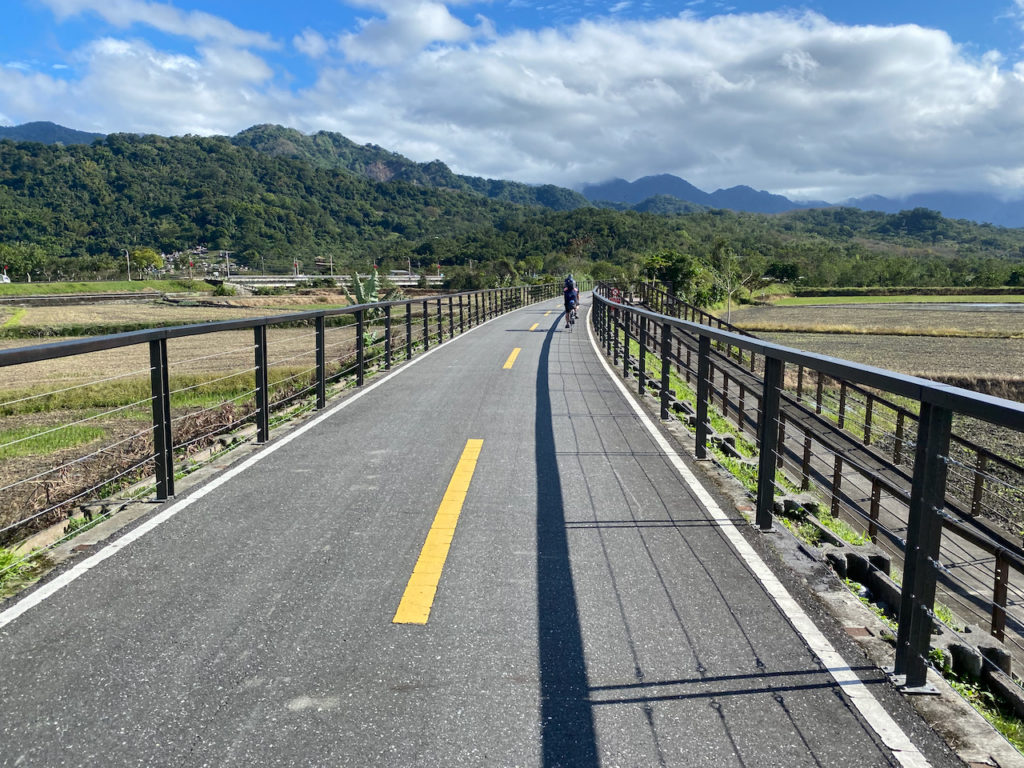
ルート
- Garmin: https://connect.garmin.com/modern/course/112384670
- Velodash: https://velodash.page.link/wLbV
- komoot: https://www.komoot.com/tour/1023792643
註記:ルートを使用するには、スマートフォンにアプリをインストールしてください。スマートフォンのブラウザで上記のリンクをタップすると、アプリが自動的に起動してルートを読み込みます。Garmin Connectの場合、アプリを使用してルートをGarminデバイスに送信できます。台湾で購入したGarminデバイスでない場合、デバイスに台湾地図がインストールされていることも確認する必要があります。このトピックに関する当社のブログ投稿もご覧いただけます
4日目:富里 ~ 台東(60km、登り324m、下り517m)
この日は、台湾最高級の米が栽培される池上に広がる「伯朗大道」を走るルートでした。広大な田園風景の中を駆け抜けるこの道は、台湾でも特に美しいサイクリングロードのひとつです。また、省道9号線のこの区間も同様に素晴らしく、快適に走ることができました。
小さな登り(約100m)を越えた後、台東駅へと下り、ここで自転車を台北行きの荷物配送サービスに預けました。
さらに、台東市内でフライトまでの時間を過ごす間、スパ施設を見つけ、スタッフのシャワールームを利用できるプランを利用しました。少しの金額を支払うことで施設のサービスを受けることができ、汗を流してリフレッシュした状態で台北行きの飛行機に乗ることができました。
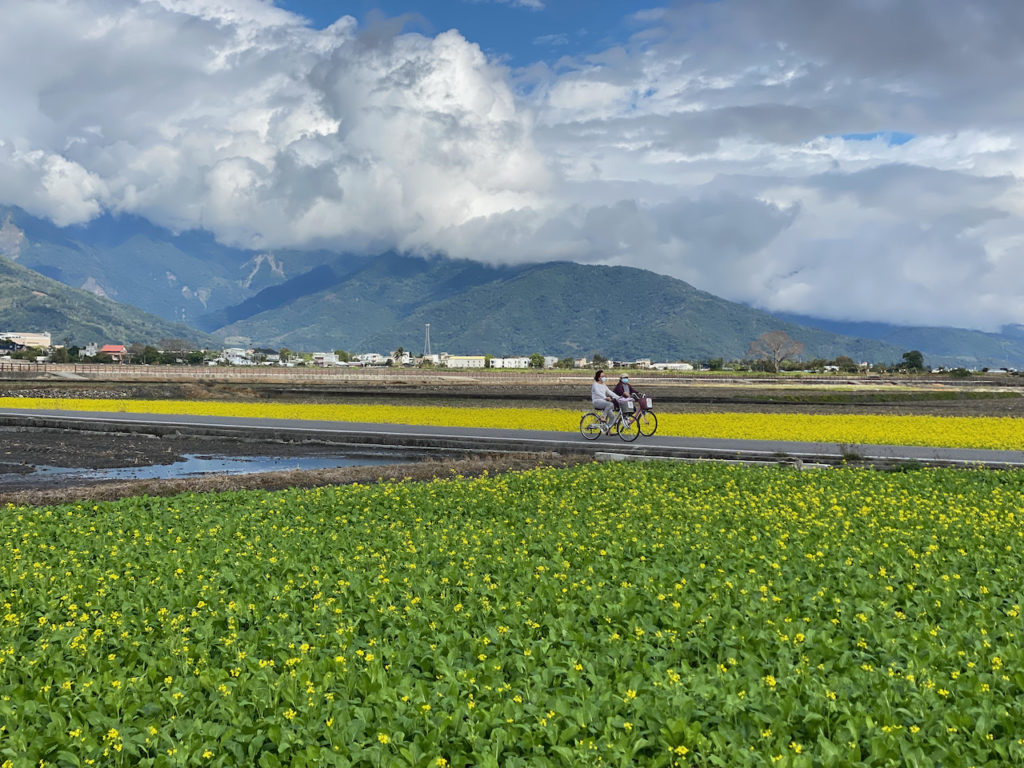
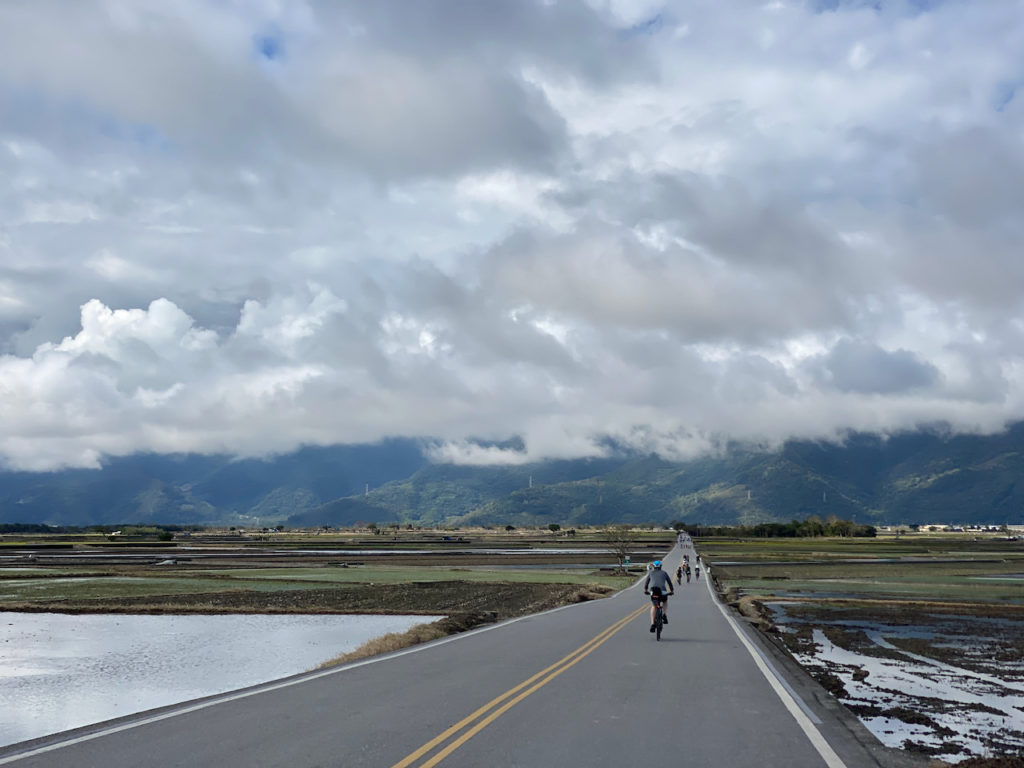
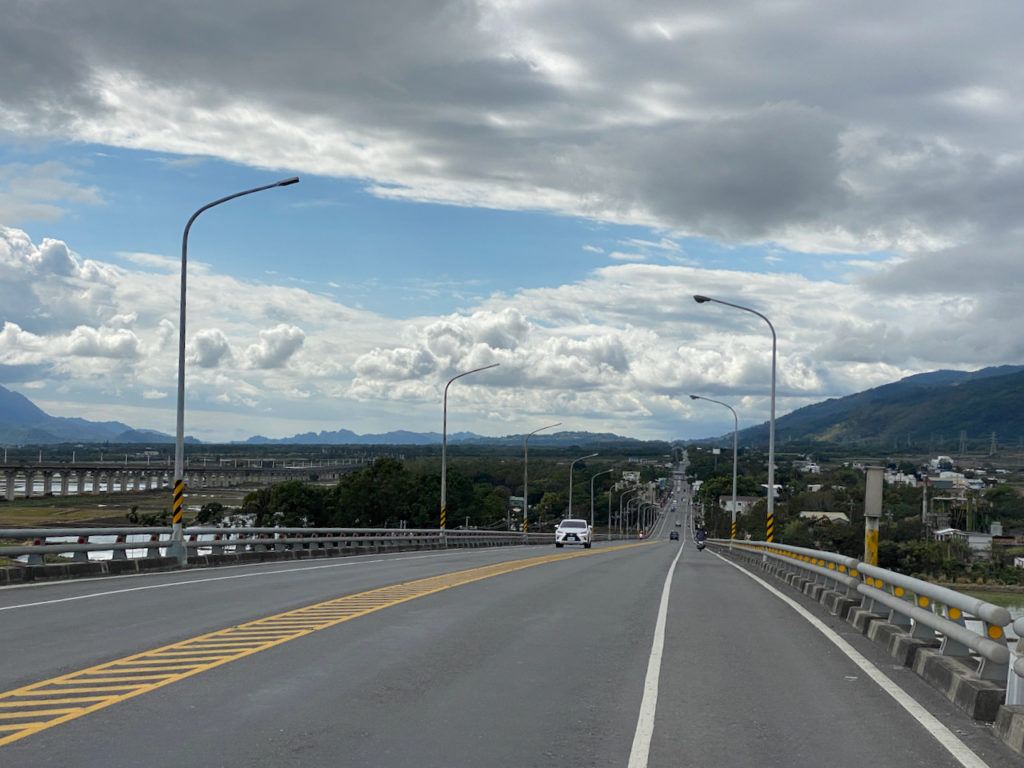
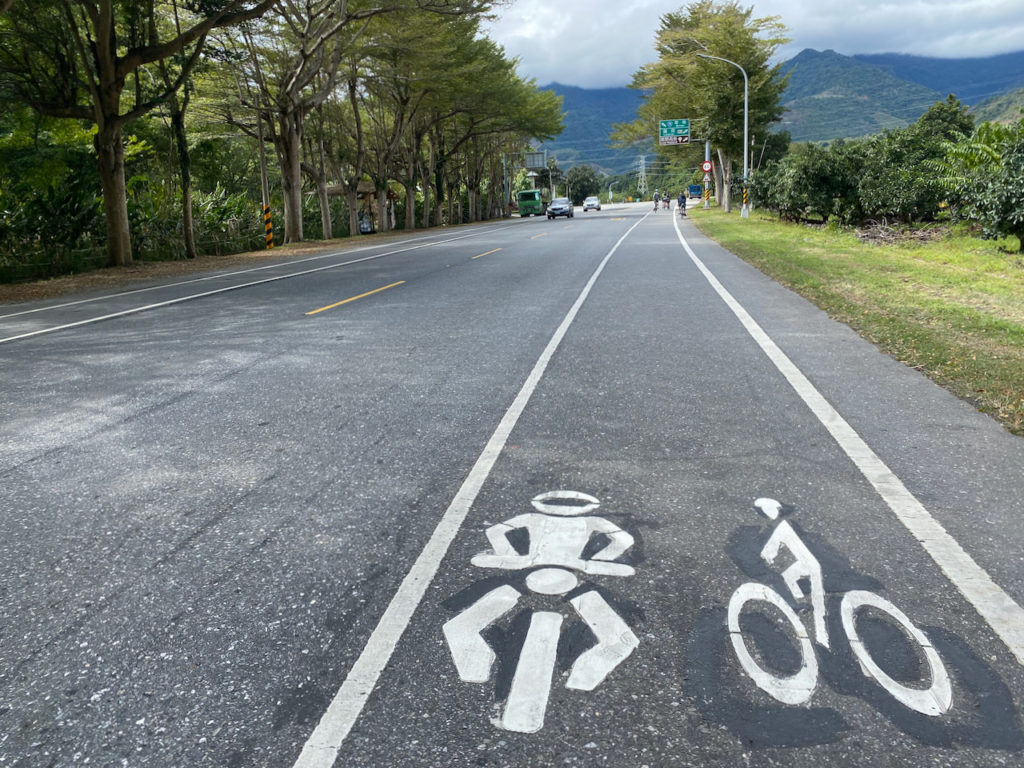
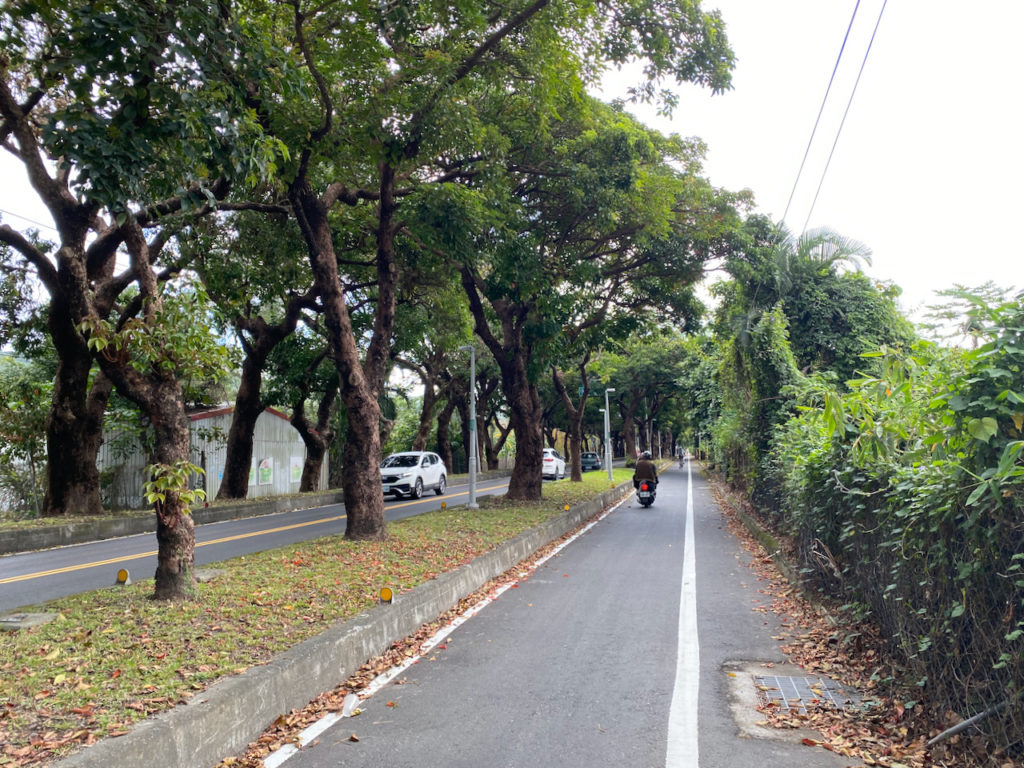
ルート
- Garmin: https://connect.garmin.com/modern/course/120621143
- Velodash: https://velodash.page.link/YYHj
- komoot: https://www.komoot.com/tour/1023794602
註記:ルートを使用するには、スマートフォンにアプリをインストールしてください。スマートフォンのブラウザで上記のリンクをタップすると、アプリが自動的に起動してルートを読み込みます。Garmin Connectの場合、アプリを使用してルートをGarminデバイスに送信できます。台湾で購入したGarminデバイスでない場合、デバイスに台湾地図がインストールされていることも確認する必要があります。このトピックに関する当社のブログ投稿もご覧いただけます
旅の締めくくり
このステージを完了したことで、台湾一周のルートはほぼ完成しました。しかし、正式には台北から福隆までの区間をもう一度走らなければ、完全なループにはなりません。ただし、友人たちはすでに週末に何度も福隆まで自転車で行ったことがあるため、「もうチャレンジは達成した!」と満足しているようでした。
これで台湾一周の旅は一区切りとなりますが、台湾にはまだまだ探索すべき場所がたくさんあります。特に、山岳地帯には魅力的なルートが無数に広がっており、新たな冒険が待っています。
